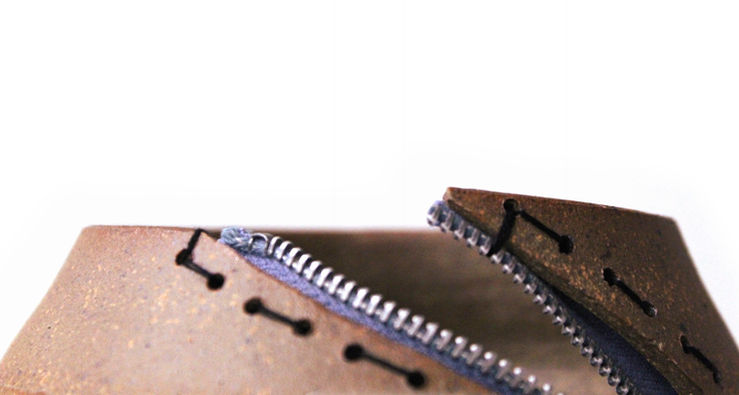top of page
Zips

The zipper inherently implies touch – its singular purpose is to zip and unzip, to cover and uncover.
When placed in the context of ceramic material, a zipper's intended purpose is hindered. The zipper as a utilitarian object is entirely repurposed.
Ultimately, the zipper and the ceramic piece are rendered useless.
We see a zipper that no longer zips and a vessel that no longer contains.
The zipper is linked to the use of clothing in our lives. Clothing covers our bodies’ nakedness, which, in the garden of Eden, had not yet been deemed sinful but was beautiful and good. It was not until sin entered the world that Adam and Eve realized their nakedness and were ashamed. Nakedness has evolved to become synonymous with the erotic, and “shameful” nakedness has become so inseparably linked with sexuality that it’s near impossible to detach the idea of unzipping something from the eroticism of unclothing someone. When a zipper is sewn onto an object that is wholly separate from the viewer, it draws this notion forward and brings consent into the conversation.
What is the viewer’s role in relation to the art? Should someone insert themself into a piece, to alter or move it, as the individual parts imply?
bottom of page












